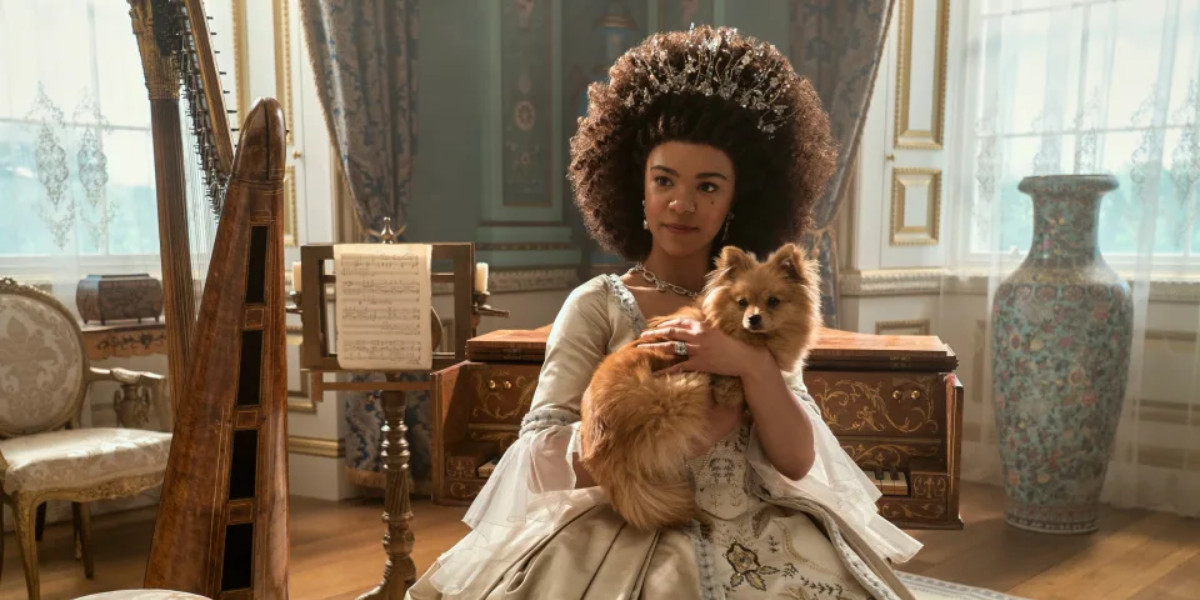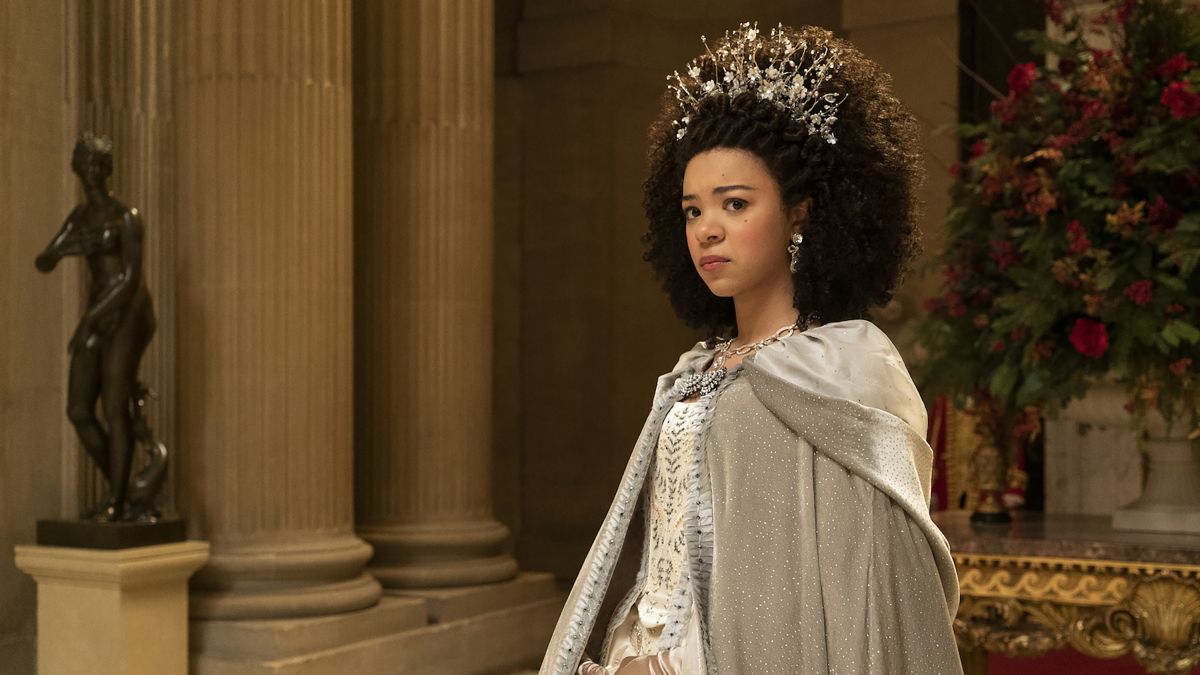The True Story of Queen Charlotte, the Subject of the Latest ‘Bridgerton’ Spinoff
Some insight into the life of Charlotte Mecklenburg-Strelitz.

Netflix’s Bridgerton spinoff Queen Charlotte: A Bridgerton Story premiered on May 4, bringing lovers of the glitz, glam, and gossip of the London ton into the life of the woman presiding over it all: Queen Charlotte, the one who decides which young lady will be declared the season’s diamond—and who would probably love nothing more than to finally unmask Lady Whistledown.
Queen Charlotte: A Bridgerton Story takes us back to when Charlotte first arrived in England. The series follows a teenage Charlotte (India Amarteifio) as she marries young King George III (Corey MyLchreest) and then the progression of their marriage.
At the same time, we see the Queen Charlotte we have come to know in Bridgerton—played by Golda Rosheuvel—deal with the fact that her children are not having children of their own, something that no royal has ever much liked, considering that babies are a pretty key part of maintaining a stronghold on the crown.

Just like Bridgerton, Queen Charlotte: A Bridgerton Story is a very romanticized take on a time in British history that has long been the subject of many a period romance piece—still, that doesn’t mean that the story we see is completely made up. Quite the contrary, considering that we’re talking about royals rather than “simple” nobles any author can make up as they go.
Was Queen Charlotte real? Is this how her story actually went down?
Queen Charlotte was very much a real person. Born a princess, she hailed from the German duchy of Mecklenburg-Strelitz—a relatively minor domain, which made Charlotte a suitable candidate to marry the recently crowned King George III of the United Kingdom and Ireland.

As we see in Queen Charlotte: A Bridgerton Story, Charlotte and George married in 1761 and went on to have 15 children, though two of them don’t survive past childhood. Of those children, two would end up taking the crown. Charlotte’s firstborn son George actually was prince regent from 1811 until his father’s death in 1820 before becoming king himself.
Most of the plot of Queen Charlotte: A Bridgerton Story revolves around the feelings Charlotte and George develop for each other after their wedding, and how their relationship is affected by the king’s bouts of physical and mental illness. In the show, we see that the king and his court—including his mother, Dowager Princess Augusta, played by Michelle Fairley—try to keep his condition a secret from Charlotte, something that more or less aligns with what really happened.

It’s true that the queen was initially kept in the dark about her husband’s illness, though should he have become unable to rule she would need to step in as his Regent, according to the Regency Bill of 1765. Once Charlotte learned the truth, she was said to have been distressed and sometimes terrified when her husband was going through a particularly bad period.
Charlotte’s own personality was very impacted by her husband’s health, as was her family life: Her relationship with her children was said to have grown strained with time, and the issue of who would assume the regency once the couple’s eldest son had come of age drove a considerable wedge between mother and son for a while.
So, overall there are several nuggets of historical truth throughout Queen Charlotte: A Bridgerton Story, including the fact that it was actually Charlotte who first introduced the German traditions of decorating a tree at Christmas to the United Kingdom—and not Queen Victoria’s consort Prince Albert, as it is widely believed.
Like so many other period pieces, Queen Charlotte: A Bridgerton Story romanticizes these true events and builds character drama around them. This time, of course, in unmistakable Bridgerton fashion, which includes beautiful costumes and string-quartet renditions of modern musical hits.
Was Queen Charlotte a woman of color?
In the show, Queen Charlotte is portrayed by actresses India Amarteifio and Golda Rosheuvel, both of whom are women of color. While Amarteifio hasn’t shared much information about her background, we know that Rosheuvel’s father is Guyanese and her mother is English.
It’s a casting choice that reflects one of the most widespread and popular theories about Queen Charlotte, which actually originated several centuries after her death. The rumor that Charlotte was a woman of color, having some distant Black ancestry in her family tree, was mainly based on how she was depicted in some of her official portraits.
The theory has been pretty much completely debunked by historians and scholars alike, but the casting choices in Bridgerton and its spinoff are very much in line with the take this particular narrative universe has on the Regency era.
What some viewers are questioning, however, is the attempt made by Queen Charlotte: A Bridgerton Story to rationalize its casting choices the same way Bridgerton did in its first season—using them to explain why there are nobles of color in the ton while most people would have automatically assumed that what they were watching was an alternate version of history.
This somewhat “forced” explanation actually creates some follow-up questions that are not easily answered: If this isn’t an alternate version of history and George and Charlotte are the heads of the British Empire as we know it, does that mean Charlotte’s wealth comes from colonialism and slavery? And so does the wealth of several other members of the ton? And they’re all happy about it?
This is why Bridgerton itself avoided giving more explanations along these lines in season 2, though it’s actually a pretty major plot point in Queen Charlotte: A Bridgerton Story. A young Lady Agatha Danbury, played by Arsema Thomas, very explicitly tells the Queen that she’s “the first of her kind.” We’ll have to see if they will be included in the upcoming season 3, or if they will be more or less glossed over again.
(featured image: Netflix)
Have a tip we should know? [email protected]